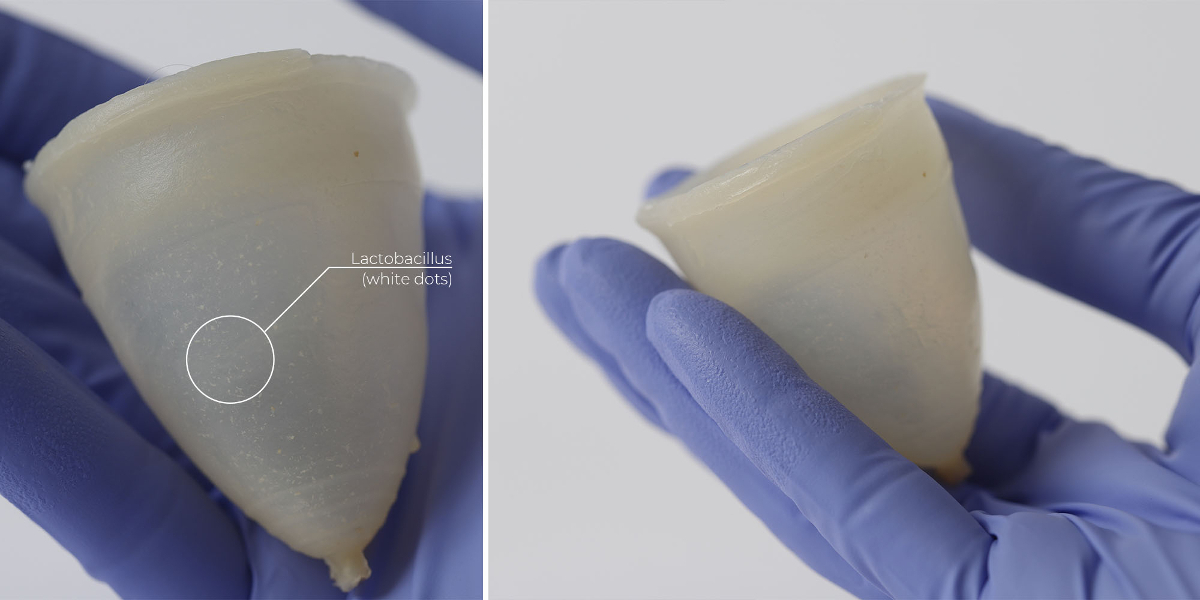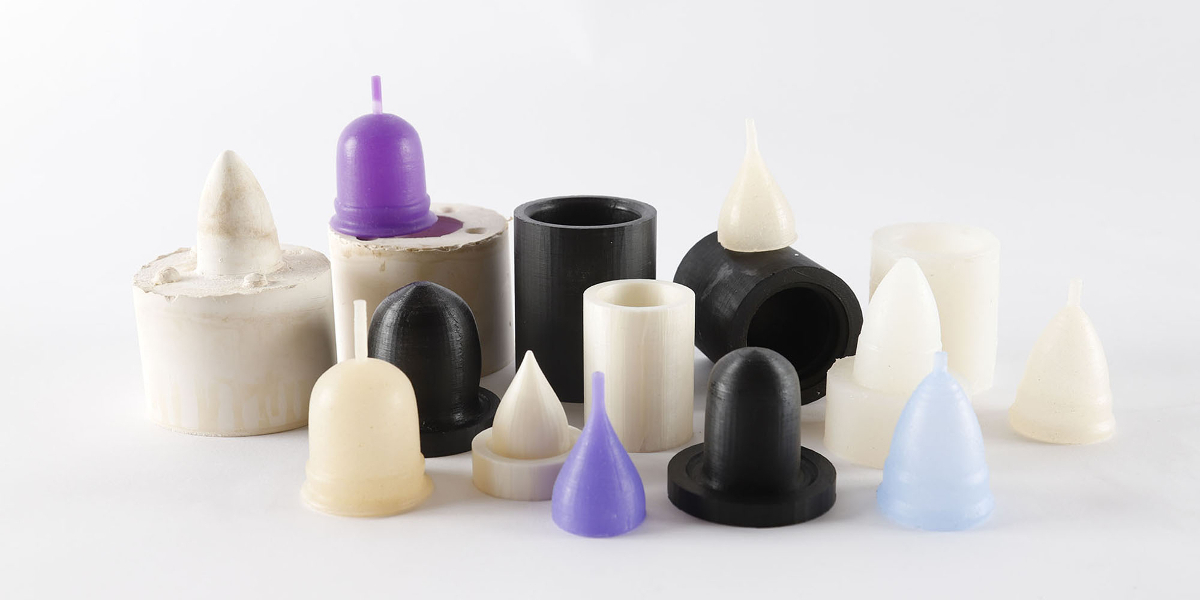AÑO
2023
CATEGORÍA
Cuerpo
OBJETIVOS
Salud y bienestar, Igualdad de género, Acción por el clima
PAL. CLAVE
biotechnology, eco-feminism, SYMBIOSIS, femcare, Speculative Design
PAÍS
United Kingdom
CRÉDITOS
Lucrezia Alessandroni is a Biodesigner with a background in Product Design and Visual Communication.
LINK
https://graduateshowcase.arts.ac.uk/project/359634/cover
The Soothing Cup
Living menstrual cup and biological incubator for tomorrow’s periods
How does it work?
The Soothing Cup explores a future where menstruators are deeply attached to their menstrual cups, establishing a mutualistic relationship as an alternative to chemically preventing periods. The development of an algae-based material allows the cup to become a membrane able to interact with the vaginal environment. Thanks to an incubator that acts as a surrogate vagina, people who menstruate can cultivate their own anti-inflammatory bacteria and let them colonize their cups once a month. When off-menses, the user is asked to take care of the cup by adjusting both growing and maintenance parameters. The level of care required in this ritual creates an intimate connection between the menstruator and the cup and thus reduces the desire to purchase single-use hygiene products. Thanks to this process, people who menstruate increase their awareness about periods whilst challenging the societal stigma.
Why is it needed?
The vaginal microbiome plays a central role in preventing vaginal infections, restoring balance, and reducing symptoms of dysmenorrhea, severe menstrual cramps that affect around 80% of menstruate. However, recent studies have highlighted how most menstrual hygiene products and pain relief medications affect our bodies and the planet by interfering with the healthy microbes we live with. Furthermore, our patriarchal and capitalist culture has perpetuated the stigma around periods by promoting the production of single-use products that have negatively influenced the behaviours of many generations. Both menstrual bodies and the environment have been poisoned by period-shame conduct, a tremendous amount of waste and poor material choices without regard for people and the planet's well-being. The menstrual cycle then becomes the perfect ground to open up a conversation about the social and environmental transition towards a Post Anthropocentric Future.
How does it improve life?
Recent studies have highlighted how the introduction of probiotic bacteria in the vaginal environment of people who suffers from painful periods can reduce symptoms of dysmenorrhea as they produce anti-inflammatory compounds. Experiments show how these bacteria can both reduce the pain, and the number of painkillers used every month, whilst contributing to the general well-being of the menstrual body. As results from the lab experiments, several strains of vaginal lactobacillus grew inside the material (hydrogel) over two days of incubation, giving life to the first menstrual product more similar to a natural system than ever: alive, interactive and biodegradable. Moreover, as our lives move faster than ever before, products are becoming increasingly dispensable. Designers need to consider how to be more relevant and essential in people’s lives. This means creating routines or rituals around certain products to develop an emotional connection.





